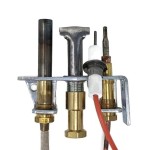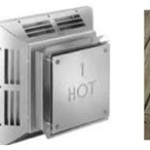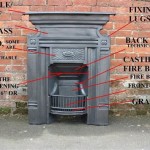Propane Gas Fireplaces Vented: A Comprehensive Overview
Propane gas fireplaces, particularly vented models, offer a compelling combination of warmth, ambiance, and convenience. Vented propane fireplaces are designed to exhaust combustion byproducts safely outdoors, ensuring a clean and efficient burning experience. This article delves into the intricacies of vented propane fireplaces, providing a comprehensive understanding of their features, benefits, and considerations.
Vent Types and Installation
Vented propane fireplaces require a dedicated vent system to safely expel combustion gases. Vent systems are typically categorized into two primary types: direct vent and B-vent. Direct vent systems utilize a single, sealed vent pipe that draws fresh air from the exterior and expels combustion byproducts directly outside. This type of vent system is often favored for its efficiency and ease of installation. Conversely, B-vent systems employ two concentric pipes: one for air intake and the other for exhaust. B-vent systems are generally less expensive to install but may be slightly less efficient than direct vent systems.
The installation process for vented propane fireplaces involves careful planning and precise execution. It is crucial to consult with a qualified gas fireplace installer to ensure proper vent system sizing, placement, and connection to the fireplace. Local building codes and regulations should also be adhered to throughout the installation process. The installer will coordinate with other tradespeople, such as electricians and masons, to ensure seamless integration with existing utilities and structural elements.
Benefits of Vented Propane Fireplaces
Vented propane fireplaces offer a range of benefits that contribute to their popularity among homeowners:
1. Increased Safety
The primary benefit of vented propane fireplaces is their enhanced safety. The vent system effectively removes combustion byproducts, such as carbon monoxide and other harmful gases, preventing them from accumulating indoors. This measure significantly reduces the risk of carbon monoxide poisoning, a serious health hazard associated with unvented fireplaces. Vented fireplaces also typically incorporate safety features, including flame sensors and automatic shut-off mechanisms, further enhancing safety.
2. Improved Energy Efficiency
Vented propane fireplaces are generally regarded as more energy-efficient than traditional wood-burning fireplaces. The vent system helps to maintain a consistent temperature inside the fireplace, ensuring that minimal heat is lost through the chimney. Furthermore, propane is a cleaner-burning fuel than wood, resulting in higher combustion efficiency and reduced emissions.
3. Convenience and Control
Propane gas fireplaces offer unparalleled convenience compared to wood-burning fireplaces. The ease of ignition and fuel supply simplifies the process of enjoying a warm and inviting fire. Modern vented propane fireplaces often come equipped with remote controls and thermostats, allowing for precise temperature adjustment and flame control from a distance. This feature enhances the overall ease of use and comfort provided by the fireplace.
4. Versatility and Aesthetic Appeal
Vented propane fireplaces are available in various designs and styles, catering to diverse aesthetic preferences. They can be seamlessly integrated into traditional and contemporary homes, adding a touch of elegance and warmth to any space. From traditional masonry fireplaces to sleek and modern gas inserts, the options are vast and allow for personalized customization to complement the existing décor.
Considerations for Propane Gas Fireplaces
While vented propane fireplaces offer numerous advantages, there are a few considerations to keep in mind before making a purchase:
1. Costs and Installation Fees
Vented propane fireplaces involve upfront costs for the fireplace unit itself, vent system installation, and propane tank setup. The overall cost can vary significantly depending on factors such as the size and features of the fireplace, the complexity of the vent system, and local labor rates. It is essential to obtain multiple quotes from reputable installers to compare prices and choose the best value for your needs.
2. Propane Supply and Maintenance
Propane gas fireplaces require a continuous supply of propane fuel. This necessitates the installation of a propane tank, either above ground or underground. The frequency of refills depends on the size of the tank and the usage patterns of the fireplace. Regular maintenance is also essential to ensure optimal performance and safety. This includes annual inspections and cleaning of the burner, vent system, and other components.
3. Aesthetics and Efficiency Balance
Vented propane fireplaces typically have a larger footprint and require a dedicated vent system, potentially affecting the overall design and layout of a room. It is important to consider the aesthetics and functionality of the fireplace in relation to the surrounding space to ensure a harmonious and efficient integration.

What Are Direct Vent Gas Fireplaces Admiral Propane

Kingsman Mcvp42 43 Inch Clean View Direct Vent Peninsula Gas Fireplace With Media

Enviro E Series Gas Or Propane Insert Fireplace Fireplaces By Cameron

Freestanding High Efficiency Direct Vent Gas Fireplaces Inserts Stoves Godby Hearth And Home

Napoleon Reversible Vented Gas Log Set Logs Stove Hearth Patio

Vantage Bayview Freestanding Direct Vent Gas Or Propane Fireplace Fireplaces By Cameron

Slayton 60 Direct Vent Linear Gas Fireplace Kozy Heat

Gas Fireplace Venting Friendly Fires

Pleasant Hearth 27 500 Btu 42 In Convertible Ventless Propane Gas Fireplace Cherry Vff Ph26lp The Home Depot

Napoleon Elevation Series 36 Gas Fireplace Direct Vent Electronic Fireplaces Usa








